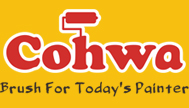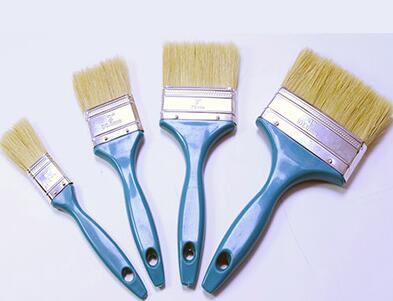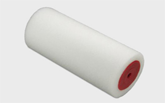Every artist should know Bristle Brush
Nov. 15, 2021Modern brushes come in a variety of shapes, sizes and bristle types -- all of these qualities can be a help or a hindrance to the artist, depending on the result they want.
Oil and acrylic brushes
Soft bristle brushes
Soft bristles make for smooth brushes. For mixed, flat paint surfaces, soft synthetic brushes are ideal. For these brushes, the consistency of the paint needs to be fairly smooth, as they do not have the ability to apply thick body paint (such as thick, butter-like acrylics). This also means they are not suitable for wet-in-wet layered paints, a technique that requires a strong coating.
Long-bristled soft brushes are great for making irregular "furry" marks at the end of the brushstroke - a feature that helps with objects that require fine lines, such as hair and grass.
Hard-bristled brushes
Brushes with thicker bristles are a good choice for creating rough effects or thick layers. Hog bristles and hard, flexible synthetics are great for heavy paint and will leave a painting mark in the paint. They can be loaded with paint and are a favorite of painters working wet in wet - they can be dragged through wet paint, making them ideal for layered work.
When working with fluid paint or when there is not enough paint, these brushes produce rough, flimsy and unattractive patches or marks.
Common brush shapes for oils and acrylics
Flat
Flat brushes are versatile. Their long bristles can create smooth patches of color; make long, thick strokes; or, when used with their edges, use crisp lines. Markers made with flat brushes have distinctive square edges.
Round
Round brushes are available with pointed or blunt tips. Both can be used to create modulated linear markers by applying more or less pressure in the stroke; the pointed round tip is perfect for detailing. Used in a scribbling motion on both sides, they create irregular, broken blocks of color.
Fan
The fan brush is a flat, figure-eight brush with a rounded tip. Although it is not used to create most paintings, the fan helps create modulation marks and interesting texture effects. Fans can be used to blend and soften the hard edges of a painted form, or they can be used to dab or flick paint on the canvas, making it available for depicting grass or fur.
Watercolor Brushes
Watercolorists use soft, short-handled brushes in many of the same shapes as those used by oil and acrylic painters, but with two notable additions: wash brushes and mop brushes.
Wash brushes
Wash brushes are very wide, flat brushes designed to hold large amounts of water and paint. They can create wide, square-edged blocks of color.
Mop brushes
Also used for washing, mop brushes are thick, round brushes with pointed or oval tips that create large, organic shapes. When applied at different angles and with different pressure, they can be used to create a subtle variation of color from wide to narrow.
Although the range of marks that can be made with a brush can be increased by experimenting with the way it is used. For example, you can try using the edge of the brush, pushing the paint instead of pulling it, and varying the amount of paint you want to paint using.
There is no substitute for understanding the inherent strengths and limitations of each brush shape. With this knowledge, the artist can determine the consistency of markers and paints they prefer to use, and the choice of brush will be obvious.


















